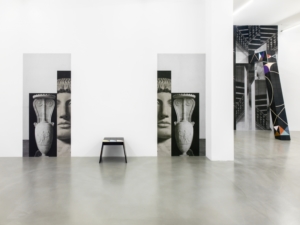Conversation Piece | Part 3

La Fondazione Memmo Arte Contemporanea, 12/16/2016 - 04/02/2017
Via Fontanella Borghese 56b 00186- Roma
La Fondazione Memmo Arte Contemporanea is proud to present Conversation Piece | Part 3, the third exhibition in a series curated by Marcello Smarrelli, and intended to chart the presence of italian and foreign artists currently living in Rome or particularly attached to the city. The artists invited to this third exhibition are: Jonathan Baldock, Piero Golia, Magali Reus (dutch fellow at the American Academy in Rome), Claudia Wieser (fellow at the Accademia Tedesca di Roma Casa Baldi).
The project was conceived with the aim of continually reviewing the contemporary art scene in Rome which is difficult to understand for the general public, but is a surprisingly active panorama dominated by the continuous activity of galleries, foundations, Academies and foreign cultural institutes where new generations of artists from all over the world, traditionally complete their education. Through these exhibitions and other activities, such us talk, workshops and performances, the Fondazione Memmo aims to support these institutions, which are considered vital in the maintenance and development of the contemporary visual arts and culture in Rome.
The project’s title is inspired by one of the most famous movies by Luchino Visconti: Gruppo di Famiglia in un interno (Conversation Piece, 1974). In turn the film’s title referred to a specific genre of Dutch painting - became popular in the XVII and XVIII centuries - showing scenes of genteel conversation and everyday domestic life. This exhibition is an opportunity to discussion on the work of different artists, who offer a great variation in research, poetry, and techniques, but it is also a moment of dialogue with Rome and its ancient and contemporary history.
As for the previous editions, also for Conversation Piece | Part 3 artists have been asked to reflect on a specific suggestion, linked to the nature of objects and their specific use in the artistic practice. «Perhaps the immobility of the things that surround us – noted Marcel Proust - is forced upon them by our conviction that they are themselves, and not anythings else, and by the immobility of our conception of them», so if we would approach things from other points of view, we should learn different and new answers that would otherwise remain unknown. This is one of the main themes of the most radical avant-garde movements of the twentieth century, such as Cubism, Dadaism, Surrealism, up to the end of the fifties to the New Dada, actually based on a new interest in the everyday object that the junk culture, revived through a process of détournement, leaving this interest as an inheritance to the movements born soon after: Pop Art, Minimalism, Conceptual Art.
It is about that principle of defamiliarization of an object proposed again by Jasper Johns in the early sixties with the statement: "Take an object / Do something to it / Do something else to it", that gave birth to a phenomenon that will be the leitmotiv of an entire generation of artists and critics.
The use of items borrowed directly from the everyday life reopens an ever-present issue within the discussion on the contemporary, revitalized by philosopher Arthur Danto in 1964 when, visiting the exhibition where Andy Warhol was exhibiting for the first time the series of Brillo Boxes, concluded that arts have –by that time- reached the maximum point of self-consciousness, because the work of art was no longer distinguishable from a commercial product: any object can be a work of art, even if not every work is separable from its time and if its "value" does not exclusively depend on the intrinsic or observables properties.
The works by Jonathan Baldock, Piero Golia, Magali Reus and Claudia Wieser, presented in this exhibition, want to give their opinion within this historical and complex debate by expressing, each one with its own language, the amazing and unexpected power of an everyday object that, thanks to the artist, enters into the "other" dimension of an exhibition space.
For More Information